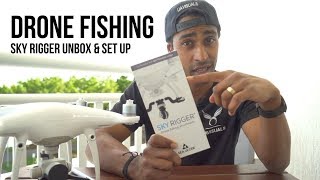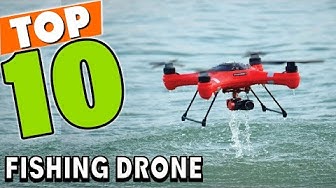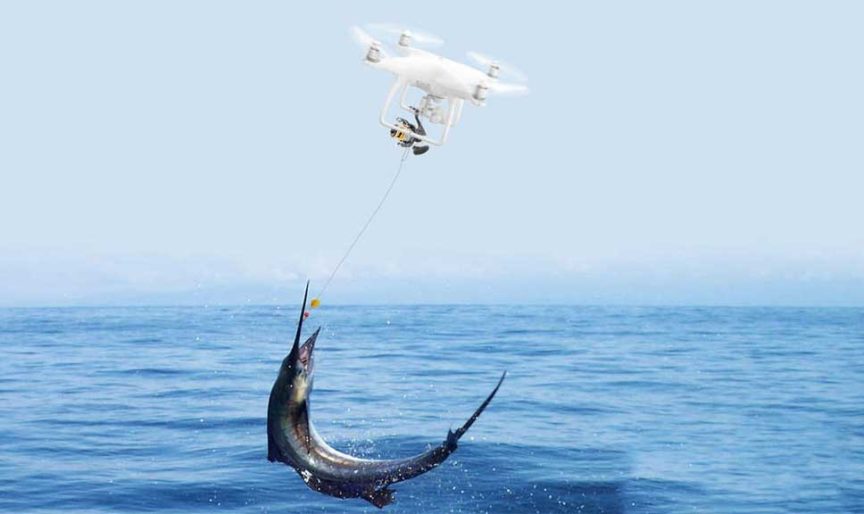
A drone can be used to view the water around your property if you're a keen fisherman living in Australia. Drones come with various features like a mechanical payload release, an angle adjustable camera, GPS positioning system, and a GPS receiver. Fishing lines can be purchased that are extremely stable and secure. One such example is the SKY RIGGER drone.
SKY RIGGER is a drone fishing line
The SKY RIGGER allows you to fish remotely from your drones using a flexible fishing line system. The system has two rotating leg clamps that can be mounted on a wide variety of drone models. The release mechanism has a bayonet style connection and a camlock arm to quickly open the line clamps. Unlike other drones, the Sky RIGGER requires no batteries and can accommodate all fishing techniques safely.
The SKY RIGGER includes an automatic release system for fish that strike your fly. You can also manually release your line with your rod or hand. This feature is standard on all SKY RIGGER models. Before purchasing the new SKY RIGGER, it is recommended to purchase a Phantom 3. Here are some pros and cons to the new line system.
It has a mechanical payload release
A drone with a mechanical payload release system is one of the most important aspects. Many drones have a release mechanism that allows the angler to easily remove the fishing line. Some models lack a release mechanism. Instead, the user must "yank" the fishing line to release the drone from the line. This can be difficult, especially for those who aren’t used to releasing the line with their hands.

Its payload release function is another important feature. The drone's payload should be capable to release its line when the fish strikes. It is important to practice catch and release fishing before trying this method, as you can't simply pull the fish to shore and release it back into the water. Many people have had good experiences with the DJI Phantom drone. However, this technology has not yet reached the level of fishing drones that are available on the market.
It has a GPS positioning system
Rippton is a joint Australian and Dutch venture that specializes in technology-oriented fishing products. It was established to help anglers improve their success rates and create products that will enhance the enjoyment of fishing. Rippton's Mobula drone is equipped with a GPS positioning device and remote release. The Mobula has the ability to hold bait at surface, provide resistance for kite clips, as well as being environmentally friendly.
It's lightweight, weighing just 3 pounds, and can fly for up to 18 minutes. The GPS system is high-tech and allows for control from as far away as 2,000 miles. The range is 1000 meters or half a miles. Intelligent flight modes are also available. The point of interest feature allows it to take high-quality photos of its surroundings. You can see great images of fish thanks to its high-resolution digital camera.
It features a failsafe function
The Aerokontiki fisherman drone comes with a failsafe feature: it monitors the battery level and releases the fishing line when needed. In case of battery failure, it will land back on dry ground to continue its mission. It is equipped with industrial-grade flight controllers that can be used anywhere, without the need for calibration. You can also use this drone in watery areas.

FAQ
Can I fly my drone in my local park?"
Yes, you can fly drones at parks all around the world. However, some countries do not allow flying drones at parks due to safety concerns. You can fly drones legally in these places.
Is it illegal for a drone to be flown?
Yes, flying drones in certain countries is illegal, such as Australia and Canada, Germany, Japan. New Zealand. Singapore. South Korea. It is however legal in many other countries such as France.
Is Drones Prohibited?
The FAA has prohibited drones from flying close to airports or stadiums, sporting events and nuclear power plants. They do allow drones to fly at night with GPS technology.
Are drones allowed to be used at public events
If you observe the rules, then you can fly a drone wherever you want. If you intend to fly your drone at a public event, such as a parade or festival, you will need permission from the organizers.
What laws govern flying drones in the United States?
The Federal Aviation Administration (FAA), which regulates all aspects drone operations in the United States of America, is responsible for them. A certificate issued by the FAA is required to commercially operate a drone. Next, you will need to complete a course in flying skills and pass an exam. Final, you will need to pay a fee.
Statistics
- Research and Markets predict a growth rate of 51.1% over the next five years. (thedroneu.com)
- According to the multiple listing service (MLS), houses and apartments with drone photographs are up to 68 percent more likely to sell than those without pictures. (thedroneu.com)
- According to ZipRecruiter, the minimum hourly wage of drone pilots is $20. (thedroneu.com)
External Links
How To
How to Fly Drones with Beginners
A drone is an unmanned aerial vehicle that can be remotely controlled and used for surveillance, aerial photography, film production, research, and other hobby purposes. Drone technology has been around since World War II. DJI's Phantom quadcopters became commercially available in 2010. From beginner-friendly drones such as Parrot AR Drone 2.0 through professional-grade multirotor craft like DJI Mavic Pro, many types have been available.
There are several ways to fly a drone, including;
-
Remote control – This is when you attach a device to your hand that allows you to control the drone's flight path. There are two main types for controllers: Joysticks or On/Off switches, which can be used to control the drone's flight path.
-
Manual Control – This allows remote operation of the drone via GPS coordinates using a smartphone application. The app will give you instructions.
-
Autonomous flight - The drone takes over the piloting duties. It's basically flying autonomously without any human intervention. It must have a builtin camera, sensors capable of taking images and data to enable autonomous flight.
-
Triggered Flight: This is similar in concept to manual control. The pilot manually creates a route and the drone then follows it until it reaches that endpoint. After the preprogrammed route is complete, the drone will automatically land and return to its base.
-
Landing Gear: Some drones have landing gear that allows them safely to land in case they lose power or run low on battery.
-
Goggles: Some pilots use goggles in order to protect themselves against debris when operating.
-
Camera - Some drones can be equipped with cameras which enable you to capture photos from the sky.
-
Obstacles-Some drones come with obstacle avoidance devices that keep them from hitting obstructions.
-
Speed – Some drones can reach speeds in excess of 40 mph.
-
Battery Life - Most drones last between 20 and 3 hours depending on how much power they have.
-
Some drones have a range of up to 30 miles, depending on their model.
-
Power source - Some drones require an external power source; others work off internal batteries.
-
Weight - Some drones have a weight of less than 1 pound and others weigh 4 lbs.
-
Size - Drones come in many sizes, from small gadgets that fit in one's hands to large craft that weigh more than 50 lbs.
-
Price - From high-end models that cost thousands of dollars to low-cost options that start at $100, all drones fall under a certain price category.